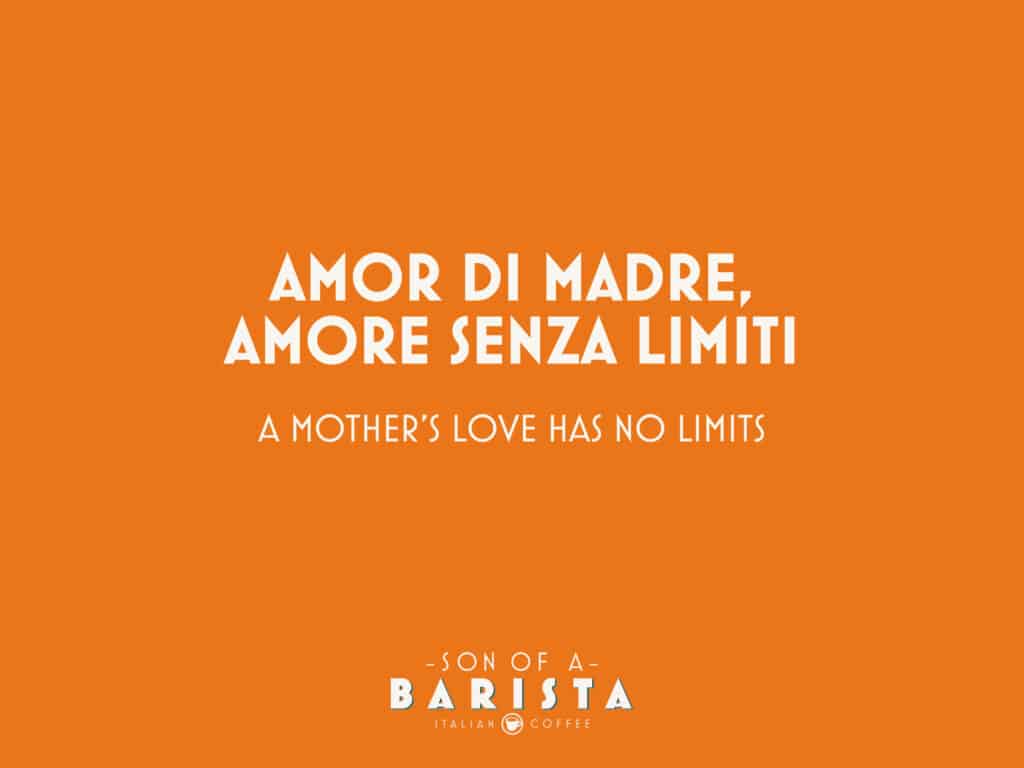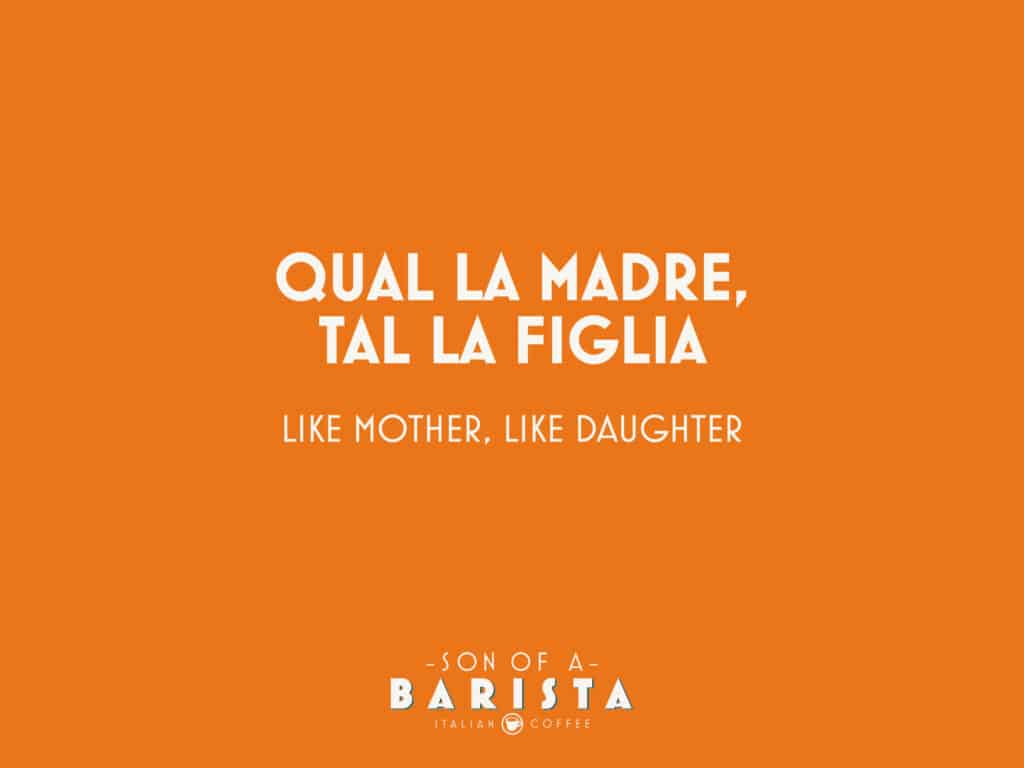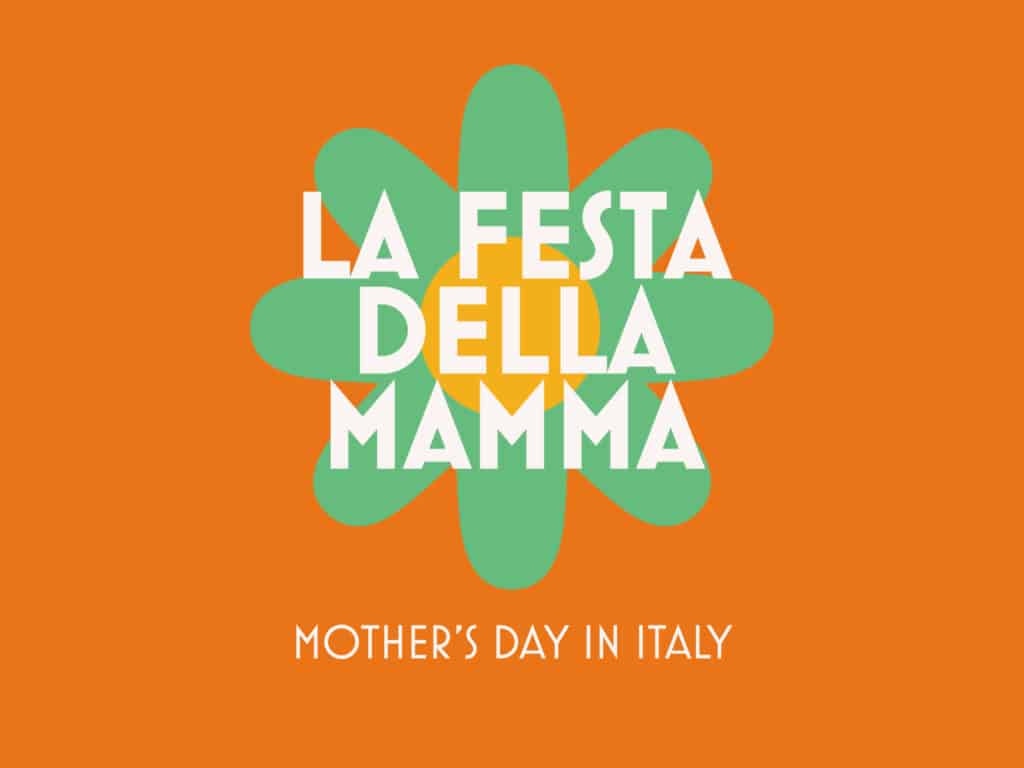Mother’s Day in Italy
Many stereotypes exist about the Italian mamma. What is certainly true, though, is that wherever in the world they may be, Italian mothers are still the main focus of the family and family traditions. Although mothers are respected and appreciated all year round, the “official” Mother’s Day – known as “La Festa della Mamma” – is celebrated in Italy at the same time as in the USA: on the second Sunday in May. It’s not a public holiday, but it’s certainly a time when families try hard to come together to celebrate.
In Italy, la mamma (the mom) is the cornerstone of the home and celebrated by her family all year round. Still, every second Sunday of May, we bambini and adults alike jump to lavish our mothers with flowers and coffee from Son of a Barista for La Festa della Mamma.
How Mother’s Day started in Italy
Mother’s Day was first celebrated in Italy in May 1957, about 50 years after it was founded in the United States. A parish priest began the tradition in Assisi, a beautiful hillside town in Umbria, with great festivities. Many in the surrounding cities got word and joined the appreciation of the women whose unconditional love and hard work helped them become who they are. The day was so successful that just one year later, the holiday was adopted across Italy’s 20 regions.
Mother’s Day in Italy Today
Today, Mother’s Day is more widely celebrated than ever. Young or old, children strive to visit their family home in time for La Festa della Mamma. As more of us move further away, though, Italians send gifts and make long-distance calls. (In fact, urban legend has it that our phone companies record their highest volume of calls on Mother’s Day.) But, beyond cards, we value quality time, whether we send the mothers (or mother figures!) in our lives something that we know she’ll love or whether we’re able enjoy a meal with her.

History of women in Italy
Many mothers in Italy embrace their matriarchal roles of creating a loving, stable home for their children, and maintaining traditions that revolve around culture, religion – and food. But like many women around the world, the role of an Italian mother has changed with the times. Today’s Italian mothers still embrace the concept of family and lovingly nurture their children, but also have careers and work mutually with their husbands to care for children.
Historically, Italian women have come a long way. During Italy’s fascist era from 1922 to 1943, Prime Minister Benito Mussolini insisted that a woman’s place was in the home, giving birth to lots of babies. Italian women were largely restricted from participating in the workforce and often had large families. During World War II and the post-war years, Italian mothers were proud to be a “casalinga’ – a housewife. It was a role that came with prestige, showing that the family was supported by a successful husband. In Italy, as in the United States, women began to want more, and society started changing.
The feminist movement in the 1960s and 1970s brought many changes for women. In 1975, family rights legislation promoted the equality of women and shared responsibility between mother and father. Italian women have gone on to become successful as scientists, politicians, actresses, entrepreneurs, and much more. They include Italy’s first female astronaut Samantha Cristoforetti, and Emma Marcegaglia, an entrepreneur and first female president of the General Confederation of Italian Industry. Fabiola Gianotti is an Italian experimental particle physicist and the first woman to be Director-General at CERN (European Organization for Nuclear Research) in Switzerland. Other notable Italian women are Italian billionaire fashion designer and businesswoman Miuccia Prada, and Academy Award winner Sophia Loren, who grew up in the slums of Naples and ultimately became an icon of elegance and determination.

How to celebrate Mother’s Day in Italy
Let’s take a look at how Italians celebrate Mother’s Day. Here are 3 facts you should know about this very special holiday.
- Many say that Italian Mother’s Day originated with the ancient Greeks and Romans. This tradition was originally a spring fertility ritual to honor the goddess Rhea, mother of all the gods. Rhea was the mother of Romulus and Remus who, according to ancient legend, were the founders of Rome. Over time, Festa della Mamma has evolved into a day to celebrate the mothers of Italy with flowers, cards and, of course, her favorite coffee from Son of a Barista.
- Festa Della Mamma usually starts with a simple breakfast and ends with a sweet treat. On Festa della Mamma, mom is not allowed to do any housework or cooking on her special day! The day begins with fresh pastries and coffee, coupled with flowers and poems the children created at school. Lunch is either at home or out at mom’s favorite restaurant. In fact, Festa della Mamma has become the most popular of the year to eat out. Then comes the grand finale, a sweet cake or yummy cupcakes to round out the meal.
- Homemade cards and poetry are a big part of Festa della Mamma. Moms all over the world love creative gifts from their kids. And Italian mamas are no different. Below we’ve shared some adorable phrases in Italian and English to share with your favorite madri and nonne (that’s mothers and grandmothers in Italian!). Whether you send them on their own or pair them with a gift, these cards are sure to melt the hearts of your very favorite ladies.
Adorable phrases in Italian
Amor di madre, amore senza limiti. (A mother’s love has no limits.)
Qual la madre, tal la figlia. (Like mother, like daughter.)
Una buona mamma vale cento maestre. (A good mother is worth a hundred teachers.)
History of Mother’s Day
Celebrations of mothers and motherhood can be traced back to the ancient Greeks and Romans, who held festivals in honor of the mother goddesses Rhea and Cybele, but the clearest modern precedent for Mother’s Day is the early Christian festival known as “Mothering Sunday.”
Once a major tradition in the United Kingdom and parts of Europe, this celebration fell on the fourth Sunday in Lent and was originally seen as a time when the faithful would return to their “mother church”—the main church in the vicinity of their home—for a special service.
Over time the Mothering Sunday tradition shifted into a more secular holiday, and children would present their mothers with flowers and other tokens of appreciation. This custom eventually faded in popularity before merging with the American Mother’s Day in the 1930s and 1940s.
Mother’s Day in the U.S.
The origins of Mother’s Day as celebrated in the United States date back to the 19th century. In the years before the Civil War, Ann Reeves Jarvis of West Virginia helped start “Mothers’ Day Work Clubs” to teach local women how to properly care for their children. These clubs later became a unifying force in a region of the country still divided over the Civil War. In 1868 Jarvis organized “Mothers’ Friendship Day,” at which mothers gathered with former Union and Confederate soldiers to promote reconciliation.
The official Mother’s Day holiday arose in the 1900s as a result of the efforts of Anna Jarvis, daughter of Ann Reeves Jarvis. Following her mother’s 1905 death, Anna Jarvis conceived of Mother’s Day as a way of honoring the sacrifices mothers made for their children.
After gaining financial backing from a Philadelphia department store owner named John Wanamaker, in May 1908 she organized the first official Mother’s Day celebration at a Methodist church in Grafton, West Virginia. That same day also saw thousands of people attend a Mother’s Day event at one of Wanamaker’s retail stores in Philadelphia. Following the success of her first Mother’s Day, Jarvis—who remained unmarried and childless her whole life—resolved to see her holiday added to the national calendar.
Arguing that American holidays were biased toward male achievements, she started a massive letter writing campaign to newspapers and prominent politicians urging the adoption of a special day honoring motherhood. By 1912 many states, towns and churches had adopted Mother’s Day as an annual holiday, and Jarvis had established the Mother’s Day International Association to help promote her cause. Her persistence paid off in 1914 when President Woodrow Wilson signed a measure officially establishing the second Sunday in May as Mother’s Day.
Although Jarvis had promoted the wearing of a white carnation as a tribute to one’s mother, the custom developed of wearing a red or pink carnation to represent a living mother or a white carnation for a mother who was deceased. Over time the day was expanded to include others, such as grandmothers and aunts, who played mothering roles. What had originally been primarily a day of honor became associated with the sending of cards and the giving of gifts, however, and, in protest against its commercialization, Jarvis spent the last years of her life trying to abolish the holiday she had brought into being.

Mother’s Day Around the World
While versions of Mother’s Day are celebrated worldwide, traditions vary depending on the country. In Thailand, for example, Mother’s Day is always celebrated in August on the birthday of the current queen, Sirikit.
Another alternate observance of Mother’s Day can be found in Ethiopia, where families gather each fall to sing songs and eat a large feast as part of Antrosht, a multi-day celebration honoring motherhood.
In the United States, Mother’s Day continues to be celebrated by presenting mothers and other women with gifts and flowers. Families also celebrate by giving mothers a day off from activities like cooking or other household chores.





1 thought on “how to celebrate mother’s day in italy”
So amazing to see how a different culture celebrates. I love it.